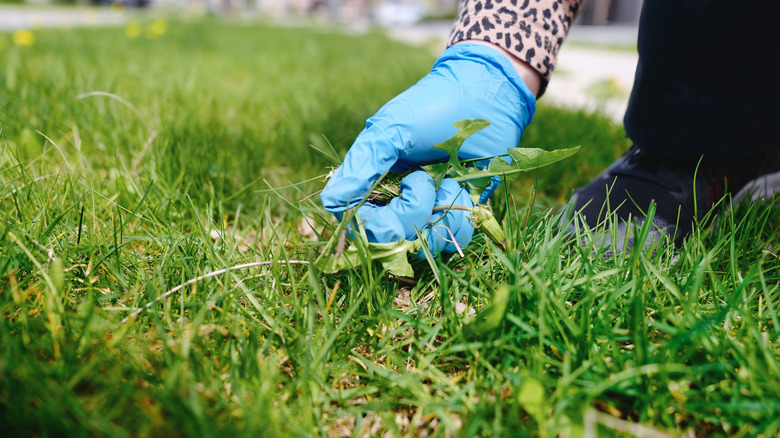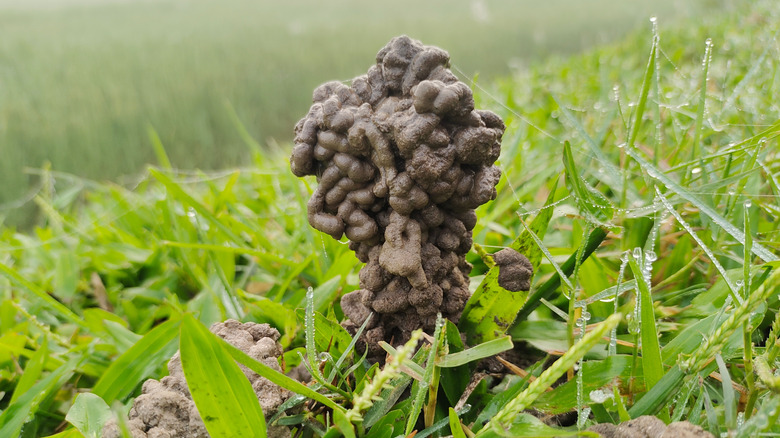The Overlooked Lawn Problem That's Fueling Weed Growth
Weeds are a nuisance in a yard, and sometimes, they show up out of nowhere, even when we are taking proper care of our lawns. You have lush grass and yet you find yourself still removing those pesky plant intruders. And the culprit helping those undesirable plants form is a beneficial feature you properly never thought of — earthworms. And while it is great to attract worms to your garden, their casts are an overlooked lawn problem that's fueling weed growth.
Worm castings look like piles of mud, which are the excrement of the soil and biological matter the earthworm digested. This in a way creates an organic manure, creating healthy soil that helps your lawn and plants flourish. Overall, these wriggly ground creatures can do wonders to your grass, such as supplying natural fertilization, boosting soil structure, resisting diseases, enhancing root growth, and encouraging microbial processes. However, these mounds of dirt they build can not only look off-putting in your yard, but provide the perfect growing conditions for some weeds that prefer rich, fertile soil, like knotweed, ground ivy, and foxtail. When squished on your lawn, these castings enable weeds to grow through inhibiting airflow. In some lawns, worm casts have too many nutrients, naturally burning your grass. However, since these earthworm droppings are so helpful, it's best to not remove them just yet. Instead, let them work their magic, eventually breaking down into the soil. Then, wait until they are dry to remove with a rake.
Wait until the casts are dry to rake them away
With worm castings being so moist, they have a tendency of sticking to everything, and when mowed, they end up looking like pancakes, creating bare patches. So, rake the mound out of the way once it's dried and hard. However, don't just toss them in the trash. Instead, repurpose them; you can take your dried up dirt casts and start worm composting in your kitchen. Another helpful way is to throw them in your compost bin or even garden, letting nature continue its course. Sweeping across your lawn with a broom will further break down the mounds, assisting your grass in absorbing nutrients faster. If you do keep them until they are dry, you should adjust your mowing height to cover the mounds until removal.
Once you have the cast out of the way, you can finally get rid of weeds from your lawn. From DIY solutions to popular commercial products, always follow the instructions before applying to avoid issues with your lawn. For more intense weed cases, contact a professional landscaping service. As a natural process, worms will most likely continue to show up and create these unsightly piles every year. The best way to ensure that weeds don't follow is to apply preventative measures. If you feel like you do have a worm infestation, you should stop watering your lawn, letting the soil dry up. Then, carefully remove them once they are on the surface, or contact a professional team.

